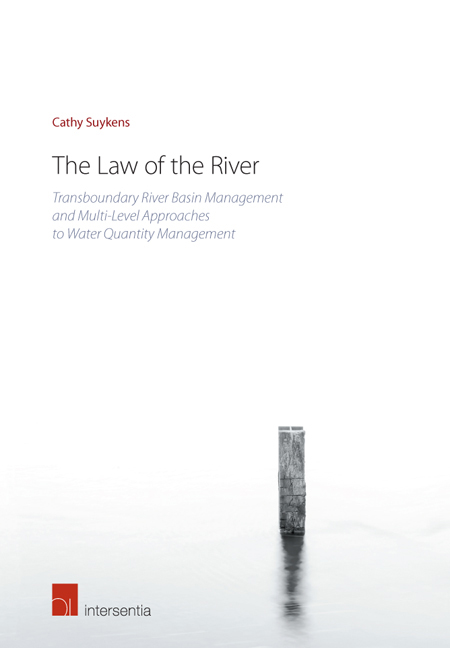 The Law of the River
The Law of the River Book contents
- Frontmatter
- Acknowledgments
- Contents
- Figures and Tables
- Acronyms
- Chapter I Introduction
- Chapter II The EU Legal Framework for Transboundary Waters with a Focus on Water Quantity Management
- Chapter III ‘Come Hell and High Water’ –The Law of the Scheldt District
- Chapter IV Case Study: Transboundary Water Governance in the United States with a Focus on the Delaware Basin
- Chapter V Recommendations
- Chapter VI Conclusions
- Bibliography
Chapter III - ‘Come Hell and High Water’ –The Law of the Scheldt District
Published online by Cambridge University Press: 12 October 2018
- Frontmatter
- Acknowledgments
- Contents
- Figures and Tables
- Acronyms
- Chapter I Introduction
- Chapter II The EU Legal Framework for Transboundary Waters with a Focus on Water Quantity Management
- Chapter III ‘Come Hell and High Water’ –The Law of the Scheldt District
- Chapter IV Case Study: Transboundary Water Governance in the United States with a Focus on the Delaware Basin
- Chapter V Recommendations
- Chapter VI Conclusions
- Bibliography
Summary
INTRODUCTION AND APPROACH
GENERAL
As explained in Chapter II, the Water Framework Directive and Floods Directive have steered requirements with regard to water management applicable to Member States along hydrological boundaries. Member States sharing the International River Basin District of the Scheldt are thus subject to these requirements. Chapter II, however, also revealed vulnerabilities in the legal framework embodying this river basin management approach.
This Chapter will examine the institutional mechanism for water management in the Scheldt, which supplements the analysis carried out in Chapter II. The feedback loop in this regard will be explained in the section 1.2 below. The knowledge gained through the “five pillars”-structure adopted in the preceding Chapter is highly relevant to the data presented in this Chapter III. Chapter II has mapped the substantive and procedural obligations applicable to Member States, and indicated which of these are a matter of best effort and a matter of result. The Chapter has shown the “ins and outs” of the institutional mechanisms for transboundary water management, which avail themselves to the Member States. A full picture emerges through a combination of theory and practice, which is why the legal knowledge gained in Chapter II needs to be supplemented by an analysis of how these requirements have been translated into the reality of a specific river basin.
For the sake of analysis, this Chapter will tease out one aspect of the umbrella concept of water quantity management, i.e. flood risk management, for reasons explained in detail in section 1.3.
APPROACH TO FINDING THE SCHELDT PUZZLE PIECES
The International River Basin District Scheldt (IRBD Scheldt) is defined as the area of land and sea, designated by the Parties to the 2002 Scheldt Treaty in accordance with the Water Framework Directive, which consists of the river basin of the Scheldt River, the related basins and the related groundwaters and coastal waters.
The IRBD Scheldt has a surface of approximately 36,500 km2, and comprises France, Belgium (the Flemish Region, Walloon Region and Brussels Capital Region) and the Netherlands. The largest part of the Scheldt River, as pictured, runs through the Flemish Region, 32.9%, and the Walloon Region, 10.3%, in Belgium, followed by France and the Netherlands. Only a marginal proportion of the river flows through the Brussels Capital Region.
- Type
- Chapter
- Information
- The Law of the RiverTransboundary River Basin Management and Multi-Level Approaches to Water Quantity Management, pp. 121 - 232Publisher: IntersentiaPrint publication year: 2018


